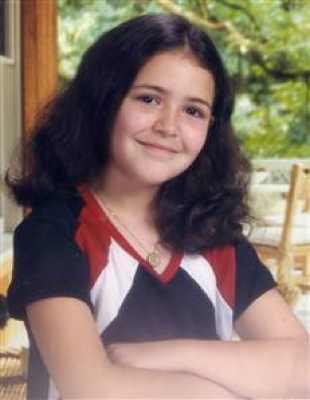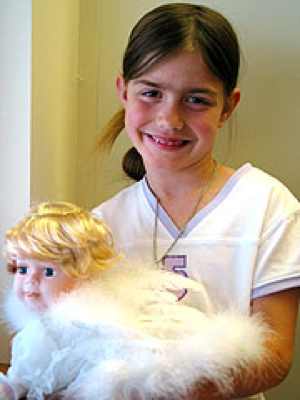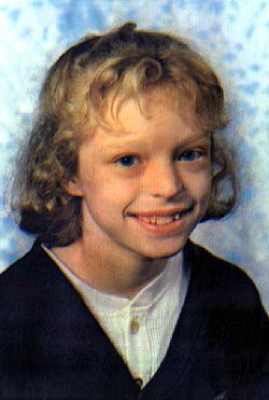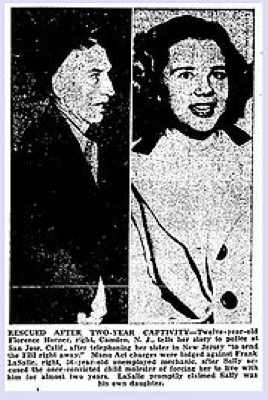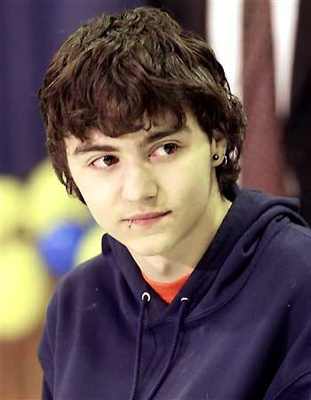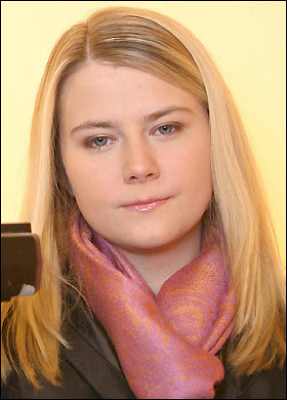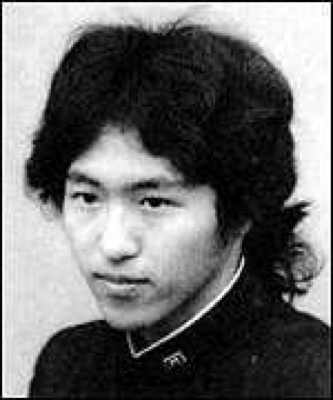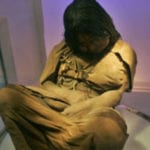Captivity: 10 days Elizabeth Shoaf, aged 14, was abducted after leaving her school bus on September 6, 2006. Her abductor, Vinson Filyaw, took her through the woods to a hand-dug, 15-foot bunker located near his trailer home. There he restrained her and raped her several times, daily. Filyaw repeatedly told Shoaf she would die and would place explosives around her neck anytime he left her. Despite this, Elizabeth talked to him about his interests and Filyaw began to view her as a person he could trust, not a captive. Eventually, Filyaw felt in love with Elizabeth and believed they would have a life together. After ten days of captivity, Filyaw allowed Elizabeth to borrow his cellphone to play games. However, Elizabeth used the cellphone to contact her mother, who proceeded to contact the police. Law enforcement used cellphone towers to locate the bunker. Once Filyaw saw on the television that the police were seeking him, Elizabeth told him to run and once he did she was able to leave and yell for help until she was found. Filyaw was arrested 5 miles away, carrying a taser, pellet gun, and a knife. Filyaw pleaded guilty to kidnapping, possession of an incendiary device, impersonating a police officer (when he kidnapped Elizabeth), and ten counts of criminal sexual conduct and was sentenced to 421 years in prison on September 19, 2007. Elizabeth Shoaf has been heralded for her bravery and the smart decisions she made that greatly improved her chances of survival.
Captivity: 7 weeks On May 16, 2005, Idaho law enforcement discovered the bodies of Brenda Groene, 40, her fiancé Mark McKenzie, and her son, Slade Groene, 13, in their home. The three had been brutally murdered and authorities noted that two of Brenda’s children, Dylan, 9, and Shasta, 8, were missing. Authorities issued an Amber Alert and the FBI conducted a massive search, all which provided no solid leads for 7 weeks. In the early hours of July 2, four individuals at a Denny’s recognized Shasta Groene from media reports and called the police. Police arrested Duncan and reunited Shasta with her family. Authorities did not believe they would find the other child, Dylan, alive and asked the public for tips, specifically concerning sightings of the car Duncan was driving during the 7 week abduction. Based on the tips provided, authorities located the body of Dylan Groene in a remote campsite on July 4, 2005. Most of what is known concerning Duncan’s crimes against the Groene family comes from interviews with the lone survivor, Shasta. Shasta stated that Duncan killed her mother, brother, and her mother’s fiancé, then took her and Dylan away in his stolen jeep. In the following seven weeks, Duncan moved the children to different campsites, where he continuously molested them. Dylan was killed at some point. Duncan would eventually plead guilty to various counts of murder, kidnapping, and sexual assault and was sentenced to 9 life sentences and 3 death sentences. Duncan would also confess to the 1997 murder of 9 year-old Anthony Martinez, for which he’d receive a life sentence in California, and the 1996 murders of sisters Sammiejo White, 11, and Carmen Cubias, 9.
Captivity: 80 days Marc Dutroux kidnapped 12 year-old Sabine Dardenne, who was riding her bike to school, on May 28, 1996. He would then keep her chained by the neck in his dungeon cellar, half-starved and repeatedly raped. Despite convincing Dardenne that he had saved her from men who sought to kill her after her parents failed to pay a ransom, she remained feisty, pestering him with questions and demands. After weeks of complaining about boredom and loneliness, Dutroux kidnapped 14 year-old Laetitia Delhez August 9. This time he was spotted and arrested August 13, 1996 and led the police to the girls August 15. After the rescue it came to light that Dutroux was responsible for the abduction, captivity, and deaths of two 8 year-olds and two teenagers. Legal and procedural mistakes resulted in an eight year gap between Dutroux’s arrest and trial. During the 2004 trial, Dutroux claimed to be a member of a nation-wide pedophile ring that involved powerful citizens of Belgium. Dardenne’s and Delhez’s testimony was a significant factor in his conviction and life sentence for kidnapping and raping six girls and the murder of four of them. Sabine Dardenne had remained silent for 8 years, releasing a memoir in 2004 titled “I was twelve years old, I took my bike and I left for school.” (English language title “I Choose to Live”). The book has been, or is being, translated into 22 languages and became a number one bestseller in Europe and the UK. As of 2006, Dardenne holds an office job in Brussels and was pursuing a career as a police officer, not due to her abduction but because her father had been a police officer.
Captivity: 9 months In the early morning hours of June 5, 2002, Elizabeth Smart, 14, was awakened and taken at knifepoint by David Brian Mitchell, who had broken into the home. Mary Katherine, her sister who shared the room, pretended to sleep as she watched the abduction. Authorities believe that Mary Katherine hid in fear for over two hours before alerting her parents. That morning was the beginning of a massive, media-saturated search that would last nine months. Smart would later testify that after Mitchell removed her from her home on June 5, they walked a few hours through the woods to his camp. After his wife, Wanda Barzee cleaned her feet, Mitchell entered the tent and performed a marriage ceremony. During the nine months Elizabeth was held captive, Mitchell would rape Smart, force her to watch pornographic movies, and consume alcohol and marijuana. Although police had Mary Katherine as a witness, she was not very helpful because she did not get a good look at Mitchell’s face. Police eventually settled on Richard Ricci, who was on parole for attempted murder of a police officer, as their prime suspect. In October, Mary Katherine realized that the voice of the kidnapper was that of a homeless man the family had once hired, “Emmanuel.” However, the police did not consider this reliable because Mary Katherine had met Emmanuel only once a year before. The family hired a sketch artist to draw “Emmanuel’s” face and on February 15, 2003 John Walsh showed the sketch on his series America’s Most Wanted (AMW). On March 12, an alert viewer of AMW called the police after spotting Mitchell with two female companions, Smart and Barzee. Mitchell and Barzee were charged with aggravated kidnapping, aggravated sexual assault and aggravated burglary, but both were deemed mentally incompetent to stand trial. In 2009, Barzee was found competent, pleaded guilty, and was sentenced to 15 years in prison. Mitchell was deemed competent in 2010, was found guilty, and was sentenced to life in prison. The Smart family published a book, “Bringing Elizabeth Home: A Journey of Hope and Faith,” about their ordeal in October 2003. Elizabeth is currently a music student at Brigham Young University. She established the Elizabeth Smart Foundation and recently signed a deal to become a contributor for ABC News.
Captivity: 21 months On June 15, 1948, mechanic Frank La Salle caught 11 year-old Florence Sally Horner stealing a 5cent notebook (which she did to join a club at school), stopped her and said “I am an FBI agent. You are under arrest.” He threatened to send her to reform school if she did not cooperate with him. He then abducted Horner, traveling across the United States and using threats to manipulate her into having sex with him. He gained employment as a auto mechanic and posed as Florence’s father, enrolling her in several schools. On March 21, 1950, Horner called her sister while La Salle was shopping and asked her to send the FBI. Later that evening, La Salle was arrested for transporting a girl across state lines for immoral purposes. La Salle claimed he was Florence’s father but the FBI discovered that her father had died seven years before. Frank La Salle pleaded guilty and was sentenced to 30-35 years in prison, less than two weeks after his arrest. On August 20, 1952, 15 year-old Florence Sally Horner was killed in a highway accident when the car she was a passenger in crashed into a parked truck.
Captivity: 4 years and three months On October 6, 2002 Shawn Hornbeck, 11, was kidnapped at gunpoint while riding his bike to a friend’s house. Michael Devlin took Hornbeck to his apartment, only an hour from Hornbeck’s home. After a month of keeping Hornbeck bound to his futon and continuously sexually abusing, terrorizing, and torturing him, Devlin took Hornbeck to the woods and began strangling him. It was only after Hornbeck promised to never do anything to escape or reveal his true identity that Devlin allowed him to live. By late 2006, Devlin began searching for a younger boy. On January 8, 2007 Devlin approached 13 year-old Ben Ownby as he walked home from school and abducted him at gunpoint. Devlin would proceed to molest Ben Ownby four times daily. On January 12, Police noticed a white truck in an apartment complex a witness at the abduction had described, searched Devlin’s apartment, and discovered both boys. Devlin was arrested and both boys were immediately reunited with their families. Devlin was charged with 80 counts and pleaded guilty in 2007. One kidnapping, one armed criminal action, and seventeen counts of forcible sodomy on Ben Ownby, with the remaining sixty-two charges of armed criminal action, kidnapping, forcible sodomy, production of child pornography, transporting a minor across state lines to engage in sexual activity, and attempted murder relating to Shawn Hornbeck. Devlin is serving 3 life sentences and an additional 170 years in prison. On April 9, 2011 an inmate who was angry at the nature of Devlin’s crimes, stabbed Devlin several times with two ice picks. Devlin was treated in a hospital and returned to the prison. Following his rescue, Shawn caught up with his classmates academically, graduating a semester ahead. He is currently attending a community college, expressing interest in working with children, possibly in psychology or social work. He also makes appearances for The Shawn Hornbeck Foundation, an organization his parents started during his disappearance. Ben Ownby’s parents say he is adjusting well to life back at home and they have decided to give back, becoming involved with organizations that support families whose children have been abducted.
Captivity: 7 years and 3 months During his walk home from school on December 4, 1972, seven year-old Steven Stayner was tricked into accepting a ride by Ervin Edward Murphy. The car was driven by Kenneth Parnell, a convicted sex offender who had convinced the simple-minded Murphy to steal a child for him to raise for religious purposes. That week Parnell told him that he had been given legal custody and from now on Steven would be called Dennis Parnell. Steven said that Parnell would eventually sexually assault him 700 times; Parnell said the actual number was far higher. Over the next seven years, Steven would be moved 12 times, enrolled in school (some of which Steven’s parents had sent missing posters to), and would begin drinking alcohol in elementary school. As Steven entered puberty, Parnell began searching for a younger child to kidnap. Parnell offered drugs and money to Steven’s friend Randall to help him and on February 14, 1980, they abducted Timmy White, 5. Steven knew that he could not allow Timmy to suffer as he had. While Parnell was away on night shift, Steven and Timmy hitchhiked on March 1, 1980 and went to the police station. The next day, Parnell was arrested for the two kidnappings. Prosecutors chose not to charge Parnell with any of the sexual assaults on Steven, believing they were protecting Steven during a time when there was a stigma against male sexual abuse. Parnell was found guilty of the kidnapping and sentenced to seven years. He was paroled after serving only five years. Randall and Murphy, Parnell’s accomplices, were each convicted on lesser charges. Following the Stayner case, California lawmaker’s changed laws that would allow consecutive prison terms for abduction cases. In 1991, the book “I Know My Name is Steven” was released, which included interviews with Steven and Parnell. On August 28, 2010, a statue of Steven and Timmy was erected in a park of Steven’s hometown. Despite initial difficulties transitioning to an abuse and alcohol free home, Steven was described as a nice man who actively spoke out on how to protect children. He married in 1985 and had two children. On September 16, 1989, Steven, 24, died after his motorcycle crashed into traffic. Over 500 people attended his funeral and Timmy White, 14, helped carry his coffin. After Timmy White’s return home, he spoke of the good times he had during his time with Steven, saying that Steven played with him and read him comic books. Timmy White became a L.A. Sheriff’s Deputy, married, and had two children. He died on April 1, 2010 of a pulmonary embolism. He was 35. On January 3, 2003, Kenneth Parnell, by then a 72 year-old man in ill-heath, was arrested after trying to convince his caretaker to buy a 4 year-old boy for him. In 2004, he was successfully convicted and sentenced to 24 years for attempting to purchase a child and attempted child molestation. Parnell died while in prison on January 21, 2008.
Captivity: 8 years and 5 months 10 year-old Natascha Kampusch was walking to school March 2, 1998, when Wolfgang Priklopil snatched and threw her into the back of his van. A large-scale police search took place with the young girl’s face appearing on televisions across the country. During the next eight years, Kampusch was being held in a tiny, windowless cellar underneath Priklopil’s garage, allowed out gradually over the years. Kampusch said that at the beginning of her captivity Priklopil was nice. However, he soon became increasingly sexually abusive and violent. He would beat her up to 200 times a week, occasionally beating her so savagely her bones would snap. She was told to refer to him as “My Lord” and forced to shave all of her hair and work as a servant. These abuses were so traumatic Kampusch attempted suicide three times. Kampusch was vacuuming Priklopil’s car on August 23, 2006 when he became distracted from a call on his phone. Kampusch, 18, saw her opportunity and ran. She was identified by a scar and DNA tests. A week after her escape, her abductor jumped in front of a train. At 18, she weighed only 106lbs, nearly the same as when she was abducted, and had only grown 6 inches. Her skin was also chalk white, her eyes were extremely sensitive to light, and she was found to suffer from a heart condition. She visited her parents once in the week she was found. Police have suggested that Kampusch’s life with her family before the kidnapping had not been a happy one. On June 1, 2008, she became the host of her own television shown in Austria, Natascha Kampusch Meets… Due to intense public scrutiny and anxiety attacks, she has chosen to spend most of her time at home. In 2010, she released her autobiography, “3,096 Days.” She is the owner of the house where she was a prisoner, which she claims to own to keep another owner from turning it into a morbid museum. Kampusch has said that she pities Priklopil. In her book she explains that she does not have Stockholm Syndrome, but is choosing to examine for herself the complex relationship she had with the “criminal” who kept her prisoner.
Captivity: 9 years and 2 months Fusako Sano was 9 years-old when she was kidnapped by Nobuyuki Sato (pictured) while watching a school baseball game November 13, 1990. Police conducted a huge search but failed to find her. She was closer than anyone realized, hidden in an apartment only 200 meters from the police department. The mentally-ill kidnapper took her to the apartment he shared with his elderly mother and locked Fusako Sano upstairs. His mother claimed to never suspect he had a captive, despite his violent behavior anytime she tried to go upstairs. During the first months, Sato kept the young girl tied up. Her kidnapper shared his clothes with her, cut her hair, and fed her three times daily. She spent most of her time listening to the radio and was only able to bath infrequently. During her nine years with him, Sato would punish her with a stun gun, threaten her with a knife, and beat her. At the beginning Sano was too scared to attempt to escape but eventually lost the energy and accepted her fate. After multiple calls were made by the kidnapper’s elderly mother concerning his violent behavior, officials visited January 28, 2000. Sano, who was with the man, approached the police and identified herself as Fusako Sano, now nineteen. Nobuyuki Sato and Fusako Sano were both hospitalized, he for psychiatric examination and she for exhaustion and dehydration. Sato was arrested for kidnapping February 10, 2000. By 2002, he had confessed to the charges and was sentenced to 14 years imprisonment. Although very thin, barely able to walk from weakness, and suffering jaundice from lack of sunlight, Sano was otherwise healthy. After her initial treatment for exhaustion and dehydration, she was reunited with her family. Her health has continued to improve since her rescue, but she is said to have the mind of a child and suffers from post-traumatic stress disorder. She helps her family on their rice paddy, but struggles with socializing after years of isolation and prefers photography and taking walks alone.
Captivity: 18 years and 2 months On June 10, 1991, 11 year-old Jaycee Dugard was knocked out with a stun gun and pulled into a car from a school bus stop as her horrified stepfather and classmates watched. A search began immediately, one that would involve all of South Lake Tahoe, even reaching the likes of television show America’s Most Wanted, but failed to bring Jaycee home. Phillip and Nancy Garrido, husband and wife, had taken Jaycee and drove her to their home. She spent the first year completely locked in a studio in the backyard, raped, and too terrified to escape. During later years she would be allowed to go outside in the backyard and even outside the home with her captors. Jaycee has said that during this time, Phillip Garrido would go on drug using binges, claim to hear voices in the wall, and began a religious blog about a church he had started. In 1994 and 1997, Phillip Garrido fathered two daughters with Jaycee. Dugard would later be told to introduce herself as Alyssa, the daughter of the Garridos and the older sister of her daughters. On August 25, 2009, Phillip Garrido arrived at UC, Berkley, asking to hold an event on campus for his church. The campus police, who had discovered he was a convicted sex offender, notified his parole officer when he brought two girls with him, whom he said were his daughters. The parole officers scheduled a meeting with him the next day to discuss the two girls. On August 26, Garrido arrived at the parole office accompanied by Nancy, Jaycee, and the two girls. The parole officer separated Garrido from the women to interview them. It was ultimately Garrido who revealed that Alyssa was actually Jaycee Dugard. Phillip and Nancy Garrido were arrested and charged with kidnapping, rape, and false imprisonment and they pleaded guilty on April 28, 2011. Phillip Garrido was sentenced to 431 years in prison and his wife was sentenced to 36 years to life. After Phillip and Nancy Garrido’s arrest, Jaycee and her daughters were reunited with her mother, Terry Probyn, and her half-sister. Due to several failures by Garrido’s parole officers during Jaycee’s captivity, California awarded her a $20 million dollar settlement. Jaycee currently lives with her mom and two daughters in California and are all taking part in reunification therapy. Jaycee did a great job educating her daughters while in captivity and they have both started school full-time. Jaycee’s memoir, “A Stolen Life,” became an instant bestseller upon release on July 12, 2011.
